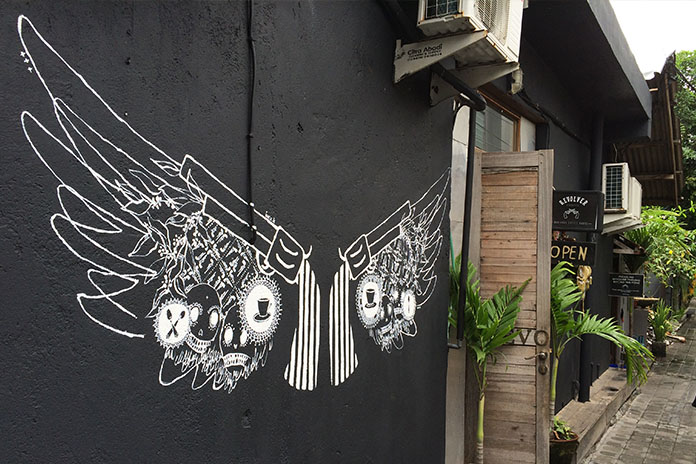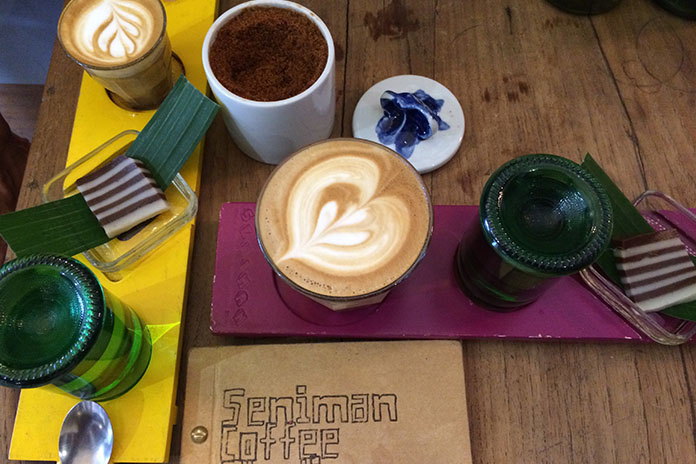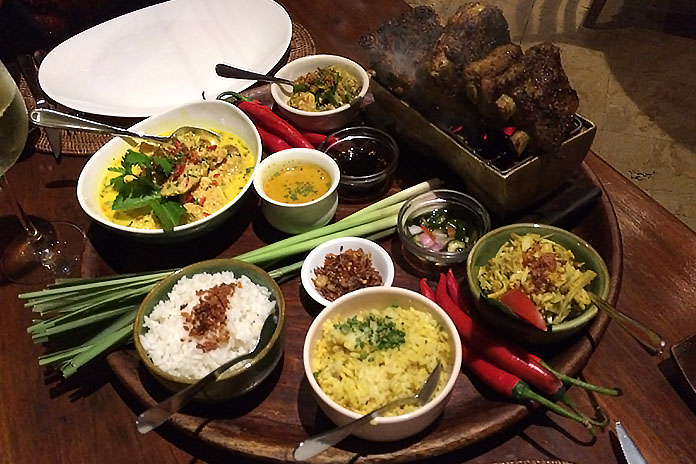
ON AN island that’s known for its art, surf, vibe and cuisine, Bali has restaurants that are impressive, relevant and worth seeking out.
Even as the infrastructure sags under the weight of increased traffic on the roads and a tourism business that continues to grow in excess of 10% per annum — there were 3.2 million tourists in 2013 — there appears to be no shortage of enthusiam to visit Bali.
Whether it’s to chill by the beach or vegetate in a villa, the options are plenty and continuing to grow as new hotels open up — The Fairmont has just opened at Sanur with another in the offing for 2016, and the Raffles Amartha on Jimbaran coast and Waldorf Astoria Bali in Bukit Pandawa, among others —villas and lodges sprout around the island, and restaurants open and shut, as they do in any country. There are the established restaurants that have found a niche and continue to attract the tourists, and newcomers that have managed to find an angle that appeals.
The pool of the Fairmont at Sanur Beach, which adds to the international hospitality brands planting their flags on Bali. Top, the front of Revolver Espresso cafe.
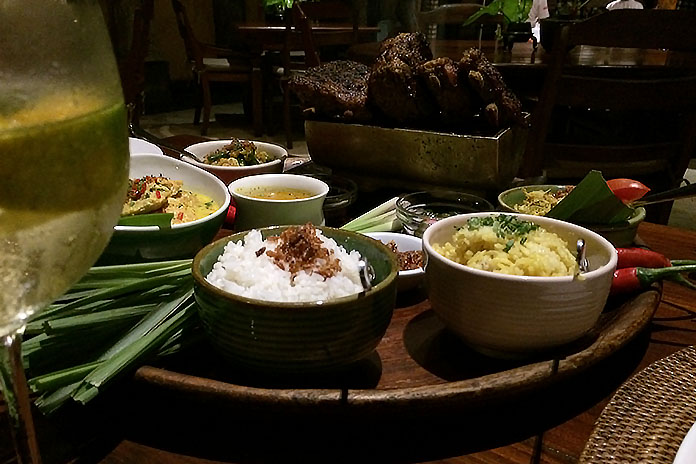
Local Flavour
Longtime resident, Heinz von Holzen moved to Bali nearly 25 years ago. He set up Bumbu Bali (www.balifoods.com) with his Balinese wife, Puji, 17 years ago. Bumbu Bali II followed, then a bed and breakfast, and market restaurant.
The ex-hotelier had the idea of the restaurant when he was in the Hyatt in Singapore. “You couldn’t find any good Indonesian restaurants,” he recalls.
So, when he found himself on another island, which back then was less about the buzz of growth and more about the buzz of insects and a laidback lifestyle, he figured he would bring authenticity to a level that could be appreciated by an international community. And it took off, thanks to Bali’s magical ability to draw tourists from far and wide.
Heinz observes that 10% of Bali is being developed for tourism. But there’s so much building going on in this small area, it’s become a “tourism ghetto”. His restaurant, in Nusa Dua, is perhaps fortuitously located where many of the big brand hotels are located.
Bumbu Bali offers dishes that are traditional to the island in a setting that is in keeping with the food. The Bali-style compound has boles wrapped with black-and-white check cloth, has fans whirring overhead, and offers no excuses for not having air-conditioners or wifi. So, it’s all about the food, which the waiters point out are served in large portions. Fair warning that should be heeded.
The Bumbu Bali’s dessert platter of local fare. Above picture, the mains are served on trays with spicy condiments.
The food is served on large trays with accompaniments that include a potent combination of garlic, shallots, chilli and shrimp paste. A fantastic complement to white rice. The curries are well-blended and the pork ribs are served crackling on a grill. Superbly marinated with the flesh firm but easily coming off the bone.
The dessert menu offers a variety of local dishes, also served in generous portions. A meal for two — two courses, dessert, wine and coffee — costs around S$35 per head. If you live in the neighbourhood of Nusa Dua, there’s a complimentary pick-up and drop-off service.
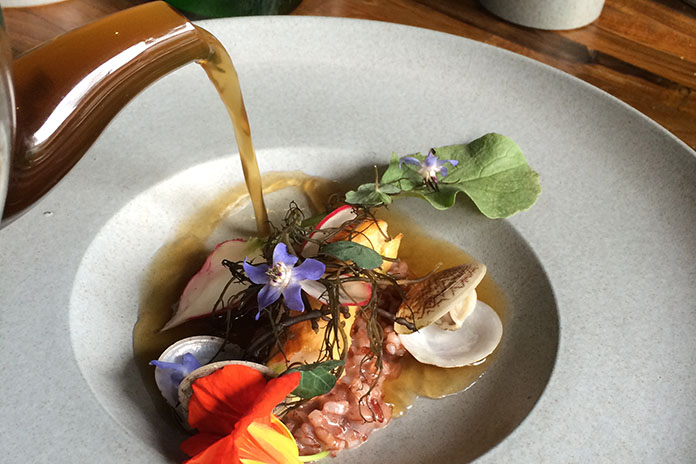
Local With A Twist
A more recent addition to the Bali dining scene is Restaurant Locavore in Ubud. This once quiet town of rice padis, artists and rusticity, has become more frantic with traffic in recent years. Restaurants have opened and closed as rentals have gone up and newcomers experiment with dining and retail concepts.
Dutch chef Eelke Pasmeiger started Locavore and has whipped up dishes like the prawn sausage in a consomme (above) and the colourful amuse-bouche (below).
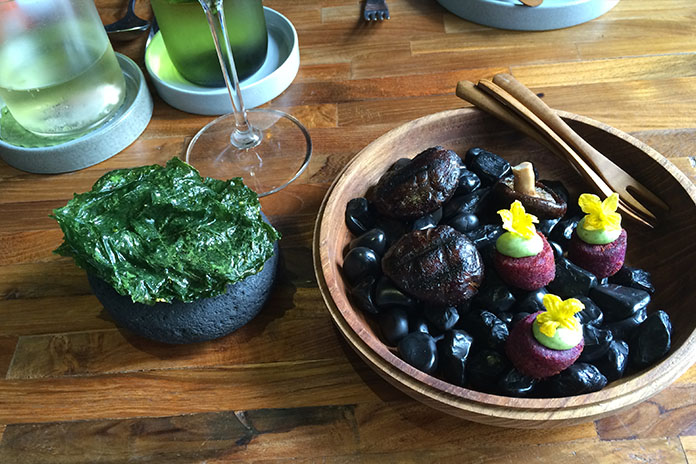
Chef Plasmeiger met his New Zealand-trained Indonesian counterpart Ray Adriansyah in Jakarta before winging to Bali where they eventually took over the kitchen at Alila Ubud. They decided to start locavore with the aim of offering culinary creations sourced from local suppliers, and applying a nose-to-tail philosophy with the meat. They would order whole local animals and cut them down.
The pleasant if not fancy restaurant is a current hotspot and often requires advance booking. The wait is worth it as the chefs roll out dishes that are works of art that taste as good as they look.
The tomato mousse in a tomato broth is so unexpectedly flavourful it sets your taste buds tingling. The chicken dish is a work of art that uses the plate as part of the canvas. Dessert is a combination of textures and tastes. While the food is served as art pieces, that is just the start of the feast.
A meal for three — three courses and coffee — costs around S$45 per head.
Small Taste Sensations
Another hidden Bali gem exists in The Balé Bali in Nusa Dua. The resort with self-contained villas offers excellent cuisine and attentive service. Above the white, clinical reception, Tapa Bistro injects colour and life in the evenings till late at night. The music is accompaniment to a range of cocktails and drinks from the bar, and the brilliant fare whipped up by chef Benny Prayoga.
Benny jets out the plates…at Tapa, at the Balé Bali.
From butter chicken — served like satay on skewers — to lip-smacking beef rendang, tangy reef fish ceviche, and cha siu pau (steamed pork dumplings), the small plates are little explosions of taste that linger on the tongue and in your mind for the novel presentation or combination of ingredients.
Friendly service staff are keen to explain the dishes and chef Benny is often seen mingling and encouraging guests to try some of his creations. It’s worth heeding his advice. The food is whipped out of the kitchen super fast, and the enthusiasm needs to be managed so that you can savour every morsel.
Dinner for two, with drinks and dessert, cost around $25 per head.
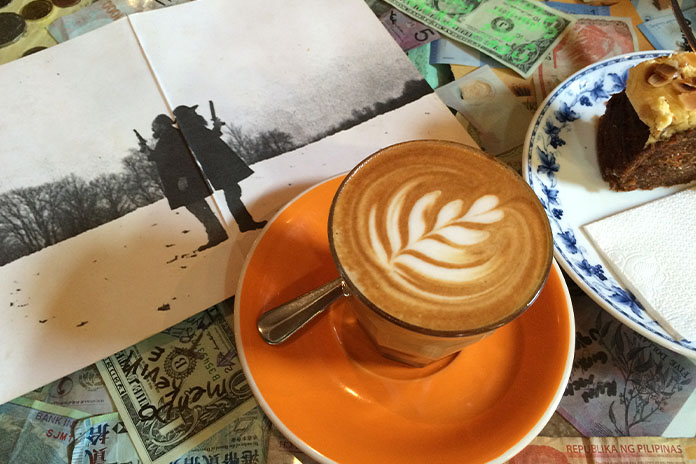
What’s Brewing?
The coffee culture has also taken on a life of its own. The out-of-sync Starbucks aside, there are small cafes that infuse character into side streets and offer a great cuppa.
Anomali coffee can be found in cafes in Ubud and Seminyak, as well as several establishments that use its beans. It offers a number of beans from the region, and sells equipment and offers classes to aspiring baristas.
Revolver Espresso is robust and gives the small cafe a buzz.
Revolver Espresso is packed at 11am with shots flying all over the two-storey café. The smell of java is rich in the air — a heady mix of beans from Columbia, Guatemala and Papua New Guinea. The coffee is on the robust side and totally in keeping with the atmosphere of the place, located off the main drag of Seminyak.
The coffees are served up on bright planks at Seniman Coffee Studio.
Seniman Coffee in Ubud is split into a coffee studio and a roaster. Helmed by coffee professionals who are accredited by organisations for grading and training of baristas, the studio serves up its specially brewed coffees on colourful sticks with a piece of local cake to complement it. The rich coffee flavours blend in with the traffic along the street. The quirky establishment also offers “original” products like the Bar Roker, a plastic chair that is also a rocking chair.
The food culture in Bali is livened up by the characters who are drawn to the island and continue to add to the mix.

















